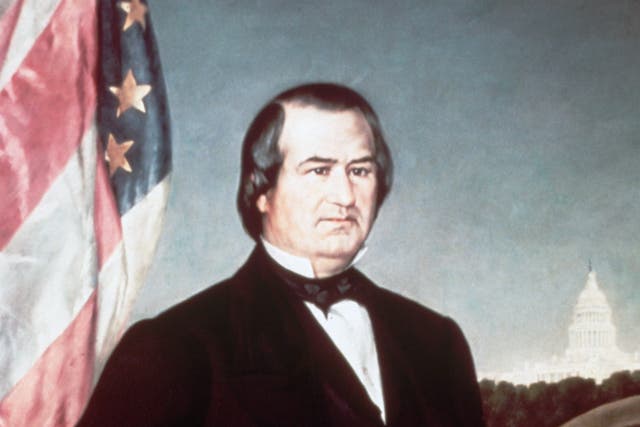

The Tenure of Office Act (1867-1887) was a controversial federal law meant to restrict the ability of the U.S. president to remove certain officials that Congress had already approved. Passed by the 39 congress on March 2, 1867, it was used as the legal premise for impeaching President Andrew Johnson, whose Reconstruction policies were unpopular with the Radical Republicans in Congress. It was repealed in 1887 and declared unconstitutional by the Supreme Court in 1926. The repeal of the Tenure of Office Act strengthened the power of the executive branch of the U.S. government.
In the wake of the American Civil War, the federal government was preoccupied with the reconstruction of the South. Andrew Johnson, a Southern Democrat who became the 17 president of the United States following the assassination of Abraham Lincoln, a Republican, inherited a government precariously attempting to stitch back a divided nation.
Originally a Democratic senator from Tennessee, Johnson was the only Southern Senator loyal to the Union during the Civil War. As president, his adherence to his belief in states’ rights and lenient treatment of former Confederate leaders brought him into open conflict with Radical Republican senators who were pushing for national legislation to protect the civil rights of former slaves in the South. By passing the Tenure of Office Act on March 2, 1867 over Johnson’s veto, the members of Johnson’s cabinet were supposedly shielded from losing their positions if they disagreed with the president. This was particularly beneficial to those who disagreed with him on big issues like Reconstruction—men like Secretary of War Edwin M. Stanton, who was aligned with the Radical Republicans and was in charge of carrying out Congressional plans for Reconstruction.
Andrew Johnson was the first U.S. president to be impeached. His offense? Trying to oust Stanton, who had been an appointee of Lincoln’s to the presidential cabinet. Stanton had simply stayed on in office without being formally being appointed by the new president. Johnson’s attempt to fire his Secretary of War came on the heels of the passage by Congress of the 14 amendment and 15 amendment protecting the rights of African Americans, flying in the face of Johnson’s attempts to make the United States “a government for white men,” as he wrote in a letter to Missouri’s governor.
When Johnson tried to fire Stanton and hire General Ulysses S. Grant in defiance of the newly-passed Tenure of Office Act, the Senate was furious and reinstated Stanton. When Johnson again attempted to replace Stanton, this time with Adjutant General Lorenzo Thomas, the House moved forward with . Nine of the eleven impeachment articles cited the president’s removal of Stanton.
The impeachment proceedings was so popular, one thousand tickets were printed each day for lucky members of the general public hoping to catch a glimpse of the spectacle. Johnson ultimately was not removed from office, as after 11 weeks, the move to do so failed by a single vote.
In 1878, the Tenure of Office Act was again brought to the fore of political conversation when President Rutherford B. Hayes defied it in an attempt to fight against patronage in the civil service system. Hayes removed future president Chester A. Arthur and Alonzo B. Cornell from patronage jobs at the New York customhouse, resulting in a battle with Republican political boss Roscoe Conkling.
In 1887, President Grover Cleveland challenged the constitutionality of the Tenure of Office Act, arguing that the president, as leader of the executive branch, had the sole power to remove appointees. He practiced what he preached, removing 600 previous appointees from office. He eventually won the ensuing standoff with Congress. The repeal of the Tenure of Office Act strengthened the powers of the president.
The final nail in the coffin for the Tenure of Office Act was the Supreme Court’s ruling in Myers v. United States, confirming the president’s power to appoint and remove executive officials.
Did you know? President Donald Trump holds the record for the highest amount of turnover in a presidential cabinet.
Tenure of Office Act. Britannica.
Why Was Andrew Johnson Impeaced? NPS.gov.
150 Years Ago, a President Could Be Impeached for Firing a Cabinet Member. History.com.
Trump Cabinet Turnover Sets Record Going Back 100 Years. NPR.
Roscoe Conkling: A Featured Biography. Senate.gov.
HISTORY.com works with a wide range of writers and editors to create accurate and informative content. All articles are regularly reviewed and updated by the HISTORY.com team. Articles with the “HISTORY.com Editors” byline have been written or edited by the HISTORY.com editors, including Amanda Onion, Missy Sullivan, Matt Mullen and Christian Zapata.